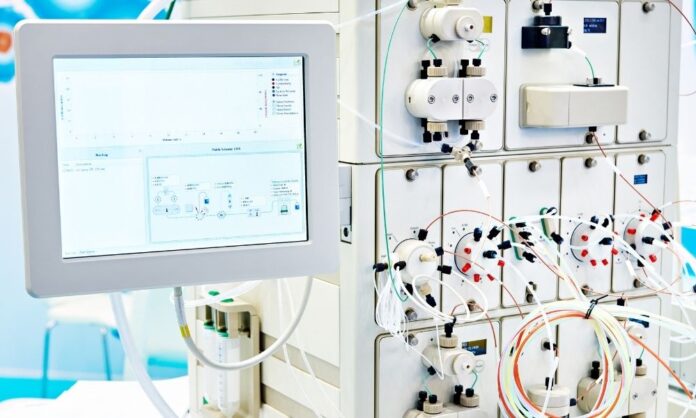When you mix two substances—especially liquids or gases they intermingle at the particulate level. For example, when you put red and yellow food dyes together, you get orange. Suppose you need to know the ratio of those two dyes after the fact. It may seem impossible, but that’s where chromatography comes in. Here are the fundamentals of high-performance liquid chromatography (HPLC).
What Is Chromatography?
Chromatography is the method scientists use to separate liquid or gaseous mixtures into their components. Specialized equipment called chromatographs force the sample through a medium that causes the components to split. Since each element in the mixture travels at different rates through the medium, technicians can analyze each one on its terms.
Chromatographs contain several essential parts. First is the stationary phase. This is the unmoving medium through which the sample passes. There is also the mobile phase, which mixes with the sample and moves it through the stationary phase. The phases and the sample work through the column—a metal tube that houses the substances. The chromatograph measures this movement with sensors that detect, gather and chart the data onto a chromatogram that scientists can read.
What Is HPLC?
HPLC is one subtype of the general chromatographical process. Technicians use HPLC to analyze liquid samples, much like the dye example above. In liquid chromatography, the stationary phase can be another liquid or a solid, while the mobile phase must be a liquid. This way, the liquid sample can mix with the mobile phase and move along with it.
HPLC takes advantage of two forces: pressure and ionic charge. The pressure at the front end of the machine forces the sample through the device. The ionic charges ensure that each particle type in the sample will move at different rates based on attraction. The combined effect of these forces allows the elution to create differential migration across the phases.
In HPLC, there are other variables at play which technicians must monitor. For example, temperature control is vital in HPLC because it can handle both volatile and non-volatile samples as long as they are soluble in the liquid phase. If the temperature rises too much, it could vaporize less stable samples and ruin the measurements. Interestingly, gas chromatography utilizes temperature as the primary movement force, driving the sample through the phases.
How Is This Tech Used?
Today, HPLC is used for many industrial and research applications including:
- Water purification.
- Pharmaceutical impurities detection.
- Biological, medical, and forensic analysis.
- Protein studies.
- Food quality testing.
- Chemical analysis in micro-gravity environments such as on the International Space Station










